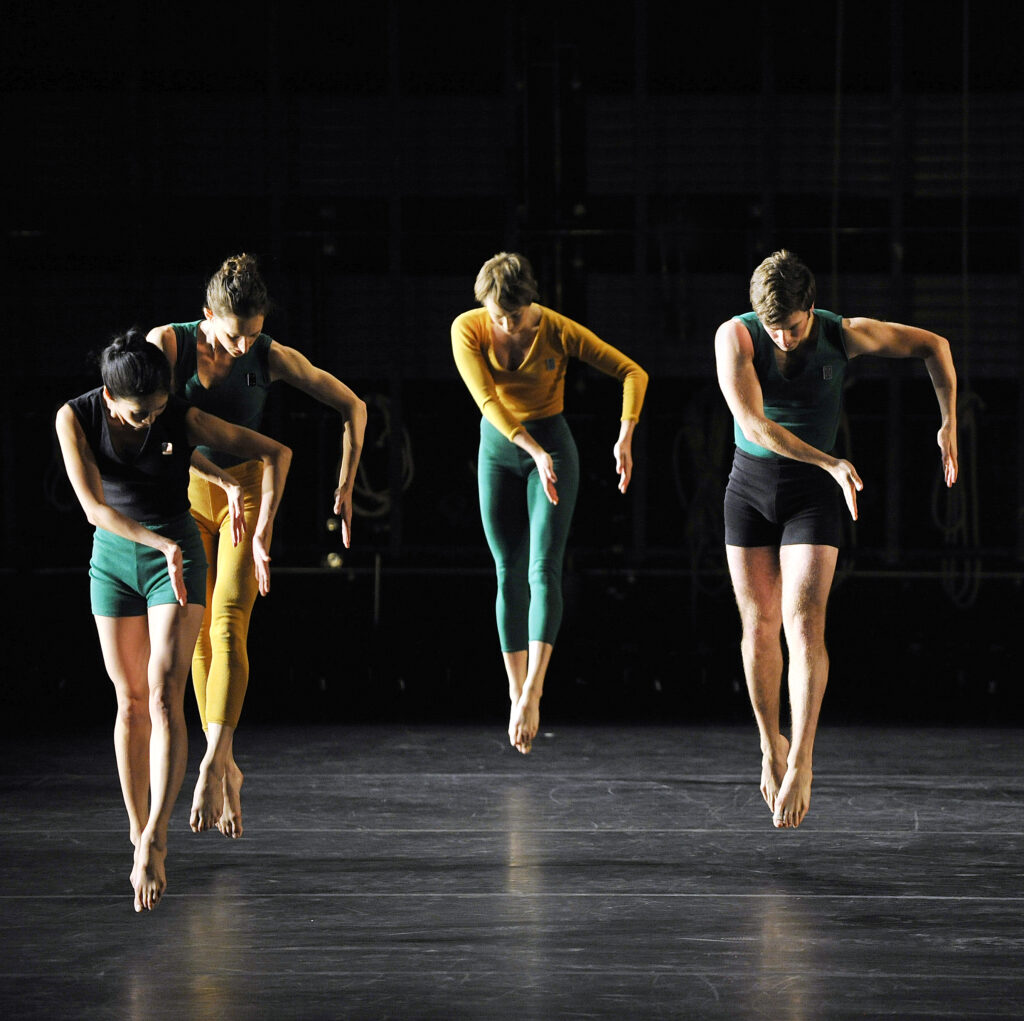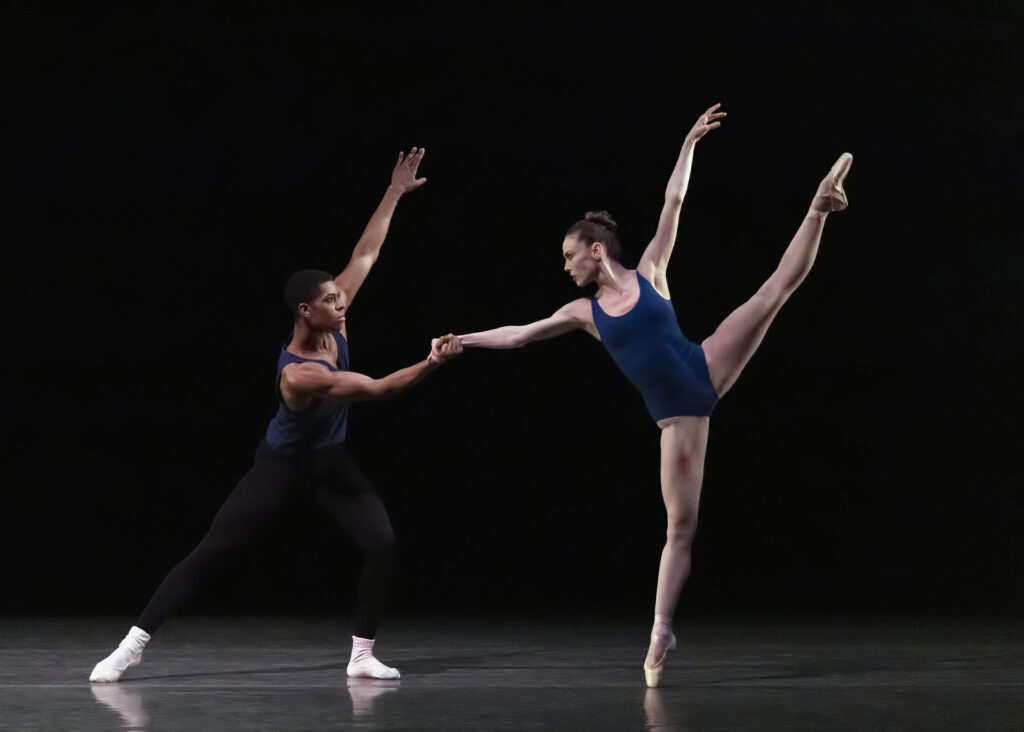[ad_1]
If music often dictates dance’s rhythm, what occurs when the melody falls silent? Dancers depend on music for a lot of issues. Virtually, a rating supplies the rhythm and counts, a technique to hold monitor of choreography’s timing in addition to entrances and exits. It’s additionally a key device for transferring collectively in unison. Artistically, music typically serves as a supply of emotional and thematic inspiration, offering a window into the general temper and tone of a piece.
Whereas dance is usually thought-about inextricably linked to music, the absence of music can open a singular area for exploration. Three artists share their experiences and recommendation for dancing in works with out music.
Tune In to Your Senses
Most dancers are accustomed to navigating a piece by its music, whether or not planning advanced motion patterns onstage or predicting a companion’s location main as much as an enormous elevate. With out music as a information, dancers as a substitute typically rely extra on different senses, like sight, however they’re nonetheless listening. Sam Black, Mark Morris Dance Group’s firm director, means that the heightened sensations and refined changes made whereas dancing in silence have rather a lot in frequent with what occurs when performing with dwell accompaniment. As a result of dwell music varies barely every time it’s carried out, dancers have to regulate accordingly within the second. “We’re at all times wanting round, we’re at all times listening very intently to cues,” he says. “That’s much more true in a bit the place we don’t have musical cues or something to take heed to besides one another’s respiration and footsteps.”

Connecting together with your senses in a deep method is one thing that may possible take follow. Black recommends gathering a gaggle of dancers and practising strolling throughout the ground collectively, shoulder to shoulder, specializing in tuning in to your personal senses, in addition to the power of the group. “The one purpose is to remain in line, simply strolling shoulder to shoulder throughout the studio,” he explains. “There’s no prescribed period of time that it’s purported to take, and also you’re not strolling in rhythm.”
Establishing a deep consciousness of the sounds and placement of the opposite dancers may assist with distractions, which you’ll be extra apt to note within the absence of music. “If someone is coughing within the viewers, or if someone sneezes or there’s rustling, you simply have to stay in that super-focused area,” says Emilie Gerrity, a principal dancer with New York Metropolis Ballet. Incorporating a mindfulness follow targeted in your senses might help make the method of tuning in simpler come efficiency time.
Emphasize Artistry
Dancers additionally draw creative inspiration from the music, equivalent to dynamics and feelings. These nonetheless exist in silent works, however they may want a bit extra accentuation with out the help of a rating, Gerrity says. “As a result of there’s not that added component of music, you actually have to attract your viewers in,” she explains.
When rehearsing for Jerome Robbins’ Strikes, which is carried out in silence, Gerrity says it was useful for her to recollect the dynamics of a sure step or part by sensory-based cueing. She says the rehearsal director provided psychological imagery as creative inspiration, describing which strikes felt “sizzling” in temperature, or which step felt like a “shock.”
Dancers can incorporate this technique by asking their administrators or lecturers for perception into the intention or feeling of the work, or by taking time to discover it on their very own. Black recommends practising a easy phrase to totally different sorts of music, taking note of the tones and emotions every tune brings forth. Acknowledging and difficult these pure inclinations will be useful with regards to performing with out music. “I do assume it’s pure that music is a sign, typically, of emotion or temper. However the reverse of that’s: Simply because one thing doesn’t have music doesn’t imply it’s devoid of feeling or emotion,” Black says.

Dance as One
Whereas it’s at all times essential to remain attuned to different dancers, dancing in a gaggle with out music makes this much more important. “It’s a must to keep on the identical wavelength, the identical breath sample, the identical energetic motion,” says Leslie Andrea Williams, a member of the Martha Graham Dance Firm. “That requires not doing an excessive amount of to face out or be past the pack. It’s about feeling that collective power.”
To follow transferring as one, Williams recommends an train impressed by Graham’s Steps within the Road, which is partially silent. In a gaggle of dancers, set up a rhythmic sample every dancer can repeat to themselves mentally. (The Graham dancers use a syllabic pronunciation of “silent walks.”) Then, stroll backwards together with your eyes closed, utilizing this specific beat—and the sounds you hear from different dancers—to information your actions. “You attempt to create the sound—after which the silence in between—with out anybody,” she explains.
Black additionally recommends the group of dancers learns a easy motion phrase with out counts. Then, masking or going through away from the mirrors, carry out the phrase collectively, attempting to remain in unison. Face totally different instructions for an additional problem. He says this train will assist develop “the power to key into what different persons are doing. You have got to have the ability to make real-time changes, however you’re so keyed into one another and so attentive that it truly finally ends up being simpler since you don’t actually must do as a lot—it’s nearly like catching the present and simply driving on it.”
[ad_2]